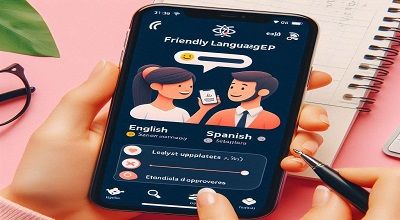Translate English to Spanish
Today we are sharing the latest How to Translate English to Spanish? Translating English to Spanish can be done through various methods. Here are some common approaches:
Online Translation Tools:
- Google Translate: Visit translate.google.com, enter the text in English, and select Spanish as the target language. Google Translate provides a quick and convenient way to translate text.
- Microsoft Translator: Another online tool that supports English-to-Spanish translation. You can find it at translator.microsoft.com.
Language Apps:
- Many language learning apps, such as Duolingo, Babbel, and Rosetta Stone, offer translation features. You can input English sentences and get their Spanish translations.
Offline Translation Software:
- Some software applications, like SDL Trados Studio or OmegaT, are used by professional translators. These tools often provide more accurate translations but may have a steeper learning curve.
Bilingual Dictionaries:
- Use a physical or online bilingual dictionary. You can find dictionaries specifically designed for English-to-Spanish translation. Websites like WordReference.com are popular for their comprehensive language databases.
Hire a Professional Translator:
- If accuracy is crucial, especially for important documents or business purposes, consider hiring a professional translator.
Language Exchange Partners:
Connect with native Spanish speakers through language exchange platforms. You can practice your Spanish and get real-time translations and corrections.
Learn the Language:
If you’re committed to understanding and translating accurately, consider learning Spanish. Understanding the grammar and nuances of the language will improve your translation skills.
- Microsoft Translator: Similar to Google Translate, Microsoft Translator (translator.microsoft.com) also offers translation services.
Professional Translation Services:
- If you need accurate and context-specific translations, you may consider hiring a professional translator or using translation services.
Human Translators:
- If the translation is critical or requires a nuanced understanding, consider hiring a human translator who is fluent in both English and Spanish.
Language Exchange Platforms:
- Connect with native Spanish speakers on language exchange platforms. You can ask for help with translations, and in return, you may assist them with English.
Learn Spanish:
- Learning the basics of Spanish grammar and vocabulary can aid in translating simple sentences and phrases. Language learning platforms like Babbel, Rosetta Stone, or online courses can be helpful.
Summary
Remember that while automated tools are convenient, they may not always capture the nuances of language, especially in complex or context-dependent situations. For important or sensitive documents, it’s often advisable to seek the assistance of a professional translator.
